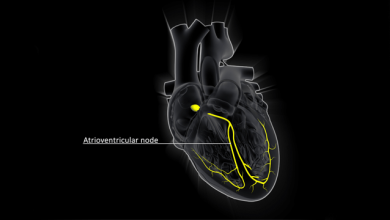Search results
Author(s):
Rohil Bedi
,
Ali Ahmad
,
Piotr Horbal
,
et al
Added:
7 months ago
Author(s):
Robert H Anderson
,
Jill PJM Hikspoors
,
Justin T Tretter
,
et al
Added:
2 years ago
Author(s):
Agnieszka Smoczynska
,
Henriëtte DM Beekman
,
Marc A Vos
Added:
3 years ago
The plasticity of the heart enables it to adapt to certain pathological insults and to maintain the cardiac output necessary to satisfy the metabolic requirements of the body.1 Although beneficial at first, this process of ventricular remodelling can have detrimental effects on cardiac function and contribute to arrhythmogenesis.2 Sudden cardiac death due to ventricular tachyarrhythmias accounts…
View more
Author(s):
Eyal Nof
,
William G Stevenson
,
Roy John
Added:
3 years ago
Sustained ventricular tachycardia (VT) and ventricular fibrillation (VF) are typically a manifestation of significant structural heart disease and often associated with a high risk of sudden cardiac death. Implantable cardioverter defibrillators (ICDs) remain the mainstay of therapy for prevention of sudden cardiac death associated with these arrhythmias.1 However, ICDs treat the arrhythmia after…
View more
Author(s):
Demosthenes G Katritsis
,
Giuseppe Boriani
,
Francisco G Cosio
,
et al
Added:
3 years ago
Endorsed by Heart Rhythm Society (HRS), Asia-Pacific Heart Rhythm Society (APHRS), and Sociedad Latinoamericana de Estimulación Cardiaca y Electrofisiologia (SOLAECE)
This is an executive summary of the full consensus document on the management of supraventricular tachycardia (SVT) patients published in Europace. The consensus document was prepared by a Task Force from the European Heart Rhythm…
View more
Author(s):
Sotiris C Plastiras
,
Haralampos M Moutsopoulos
Added:
3 years ago
Author(s):
Carina Blomström-Lundqvist
,
Tatjana S Potpara
,
Helena Malmborg
Added:
3 years ago
With the advent of successful surgical repairs and modern diagnostic techniques, an increasing number of patients with congenital heart disease survive to adulthood. Despite these improvements, the surgical corrective atrial incisions performed during childhood lead to subsequent myocardial scarring that have the inherent risk of harbouring substrates for macro-reentrant atrial tachycardias …
View more
Author(s):
Abhishek Maan
,
Moussa Mansour
,
Jeremy N Ruskin
,
et al
Added:
3 years ago
Atrial fibrillation (AF) is the most common cardiac arrhythmia encountered in clinical practice.1 It has been estimated that >3million people in the US and >4.5 million in the EU have paroxysmal or persistent AF.2–4 AF is associated with an approximately fivefold increased risk of stroke,5 threefold risk of heart failure,6 diminished quality of life7 and increased healthcare costs.8,9…
View more
Author(s):
Henry Chubb
,
Steven E Williams
,
John Whitaker
,
et al
Added:
3 years ago
Interventional magnetic resonance imaging (MRI) is a growing field, and the strength of MRI guidance for procedures rests fundamentally in the high-contrast imaging of soft tissue structures. Combined with the avoidance of radiation exposure, the potential for functional assessment and the ability to exploit MR signals for calculation of the location of interventional instruments, it is clear…
View more
Author(s):
Ethan R Ellis
,
Mark E Josephson
Added:
3 years ago
Cardiomyopathies are heterogeneous heart muscle disorders with a wide range of aetiologies and clinical manifestations. They are often defined by their causes (i.e. hypertension, prior myocardial infarction, valvular heart disease), although current major society definitions describe cardiomyopathy as the presence of abnormal myocardial structure and/or function in the absence of underlying…
View more













 « First
« First